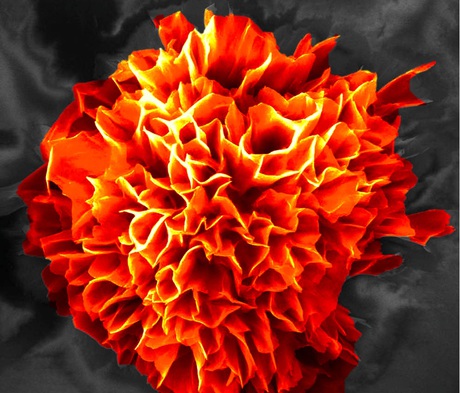Self-assembling microflowers open new electronic frontiers

RMIT University researchers have developed artificial microflowers that self-assemble in water and mimic the natural blooming process, an important step for advances in frontier-edge electronics.
Flower-shaped structures have been the focus of research because their distinctive surfaces offer exciting potential for applications in a range of fields — from optoelectronics and chemosensors to nanotechnology, biotechnology, biomedicine and organic electronics.
The team from the RMIT-Indian Institute of Chemical Technology Research Centre has for the first time developed microstructures shaped like flowers that build through self-repeating arrangement in water.
Lead investigator Dr Sheshanath Boshanale said the field of organic flower-shaped morphology was still in its infancy. “This is the first time flower-shaped microforms have been developed in a water solution, opening an exciting new pathway for further research,” he said.
“The artificial blooms developed by our team are just 10 microns wide — about 10 could fit along the width of a strand of human hair.
“While tiny, they have potential to make a big impact by enabling researchers to easily and reliably build microflowers and use them to break frontiers in a range of scientific fields.”
To create the microflowers, researchers mixed two organic components (NDI-bearing phosphonic acid and melamine) in water, which is then evaporated. The artificial microflowers take about three hours to fully develop, mimicking the way natural flowers bloom.
The research has been published in Scientific Reports, a high-impact open-access journal from the publishers of Nature.
OLED circular polarisation is now electrically switchable
Researchers have discovered a way to control left- or right-handed polarised light via charge...
Nanoscale pixels to advance augmented reality eyewear
Physicists have developed extremely small pixels that can be used in compact AR glasses, using...
Novel semiconductor shows superconducting promise
Researchers from The University of Queensland have demonstrated superconductivity in...





